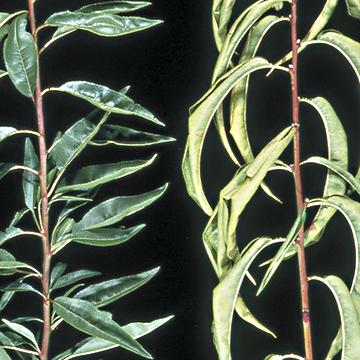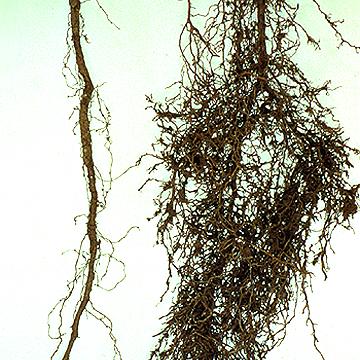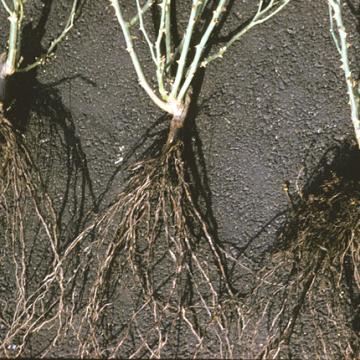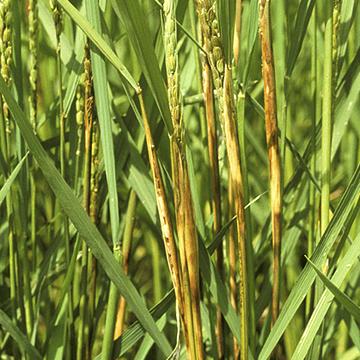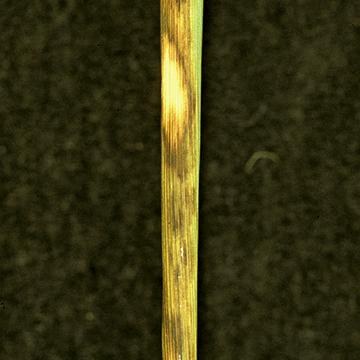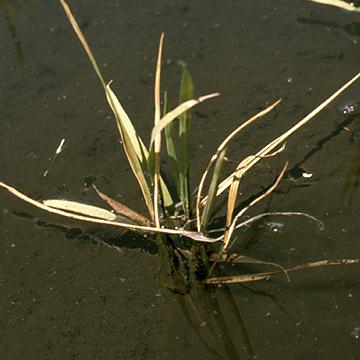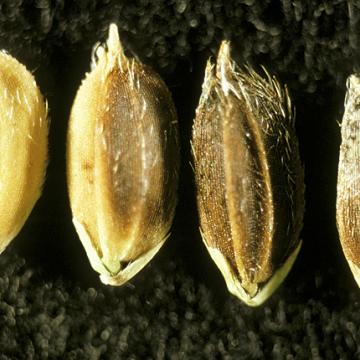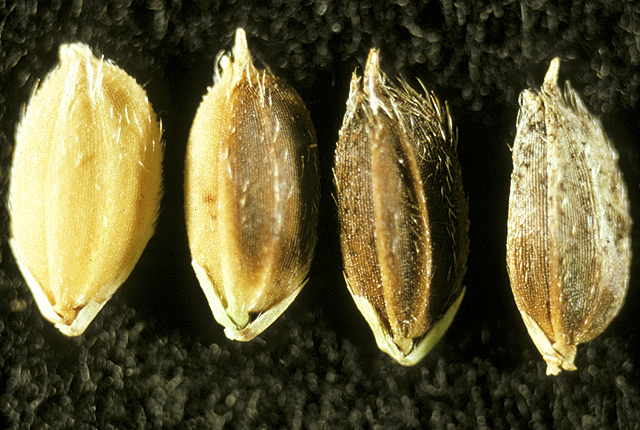DISEASE: European stone fruit yellows
HOST: Almond
The disease causes yellowing and rolling of leaves (right). Leaves become thick and rough in texture. Healthy leaves (left).
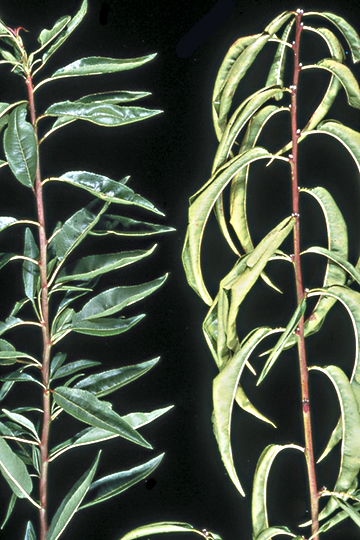
European stone fruit yellows | Almond
DISEASE: European stone fruit yellows
HOST: Almond (Prunus dulcis)
PATHOGEN: 'Candidatus Phytoplasma prunorum'
PATHOGEN SYNONYM: Phytoplasma Apple proliferation group
SOURCE: E. Seemueller
DISEASE: Hairy root
HOST: Rose
Hairy root symptoms of many fibrous roots (right). Noninfected root (left).
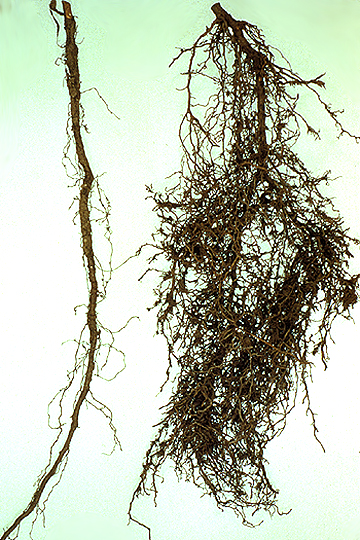
Hairy root | Rose
DISEASE: Hairy root
HOST: Rose (Rosa sp.)
PATHOGEN: Agrobacterium rhizogenes
SOURCE: R. Raabe
DISEASE: Hairy root
HOST: Apple
Crown gall (left) and hairy root (right) caused by Agrobacterium tumefaciens and A. rhizogenes, respectively.

Hairy root | Apple
DISEASE: Hairy root
HOST: Apple (Malus domestica)
PATHOGEN: Agrobacterium rhizogenes
PATHOGEN SYNONYM: Rhizobium sp.
SOURCE: APS
DISEASE: Hairy root
HOST: Rose
Crown gall (left) and hairy root (right) caused by Agrobacterium tumefaciens and A. rhizogenes, respectively. Healthy root (center).
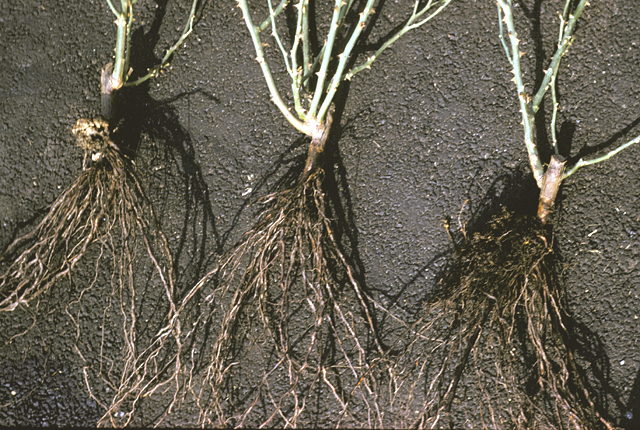
Hairy root | Rose
DISEASE: Hairy root
HOST: Rose (Rosa sp.)
PATHOGEN: Agrobacterium rhizogenes
PATHOGEN SYNONYM: Rhizobium sp.
SOURCE: M. Schroth
DISEASE: Sheath brown rot
HOST: Rice
Disease symptoms typically occur on flag leaf sheaths from booting to heading stage and also on panicles. Water-soaked lesions on glumes turn light brown.
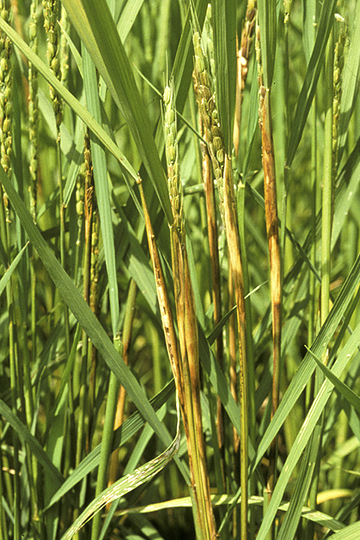
Sheath brown rot | Rice
DISEASE: Sheath brown rot
HOST: Rice (Oryza sativa)
PATHOGEN: Burkholderia fuscovaginae
PATHOGEN SYNONYM: Pseudomonas fuscovaginae
SOURCE: K. Miyajima, M. Goto
DISEASE: Sheath brown rot
HOST: Rice
Close-up of stem lesions.
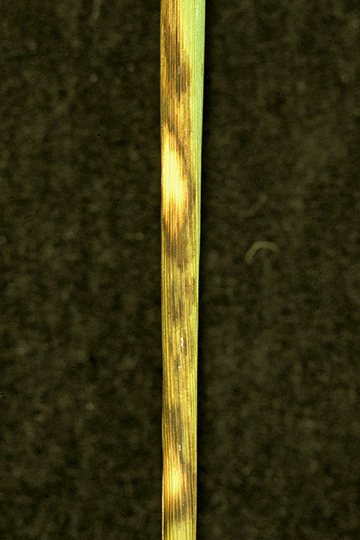
Sheath brown rot | Rice
DISEASE: Sheath brown rot
HOST: Rice (Oryza sativa)
PATHOGEN: Burkholderia fuscovaginae
PATHOGEN SYNONYM: Pseudomonas fuscovaginae
SOURCE: K. Miyajima, M. Goto
DISEASE: Sheath brown rot
HOST: Rice
Seedling with rot symptoms.
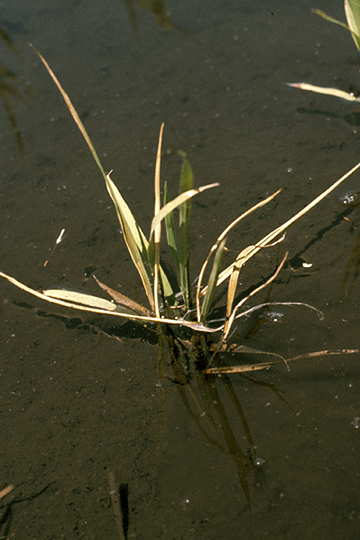
Sheath brown rot | Rice
DISEASE: Sheath brown rot
HOST: Rice (Oryza sativa)
PATHOGEN: Burkholderia fuscovaginae
PATHOGEN SYNONYM: Pseudomonas fuscovaginae
SOURCE: K. Miyajima, M. Goto


